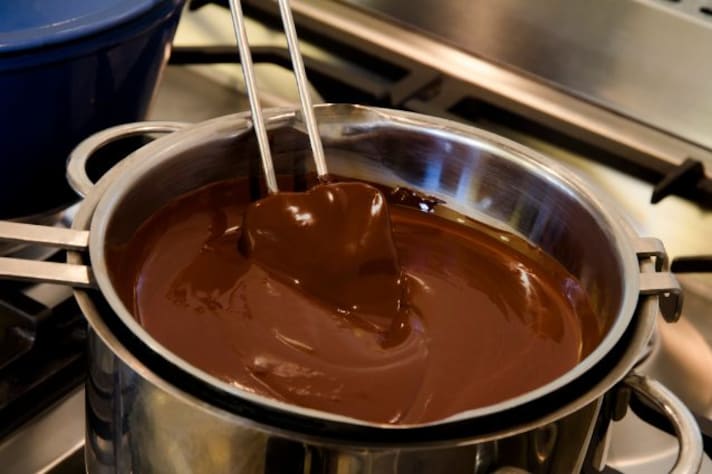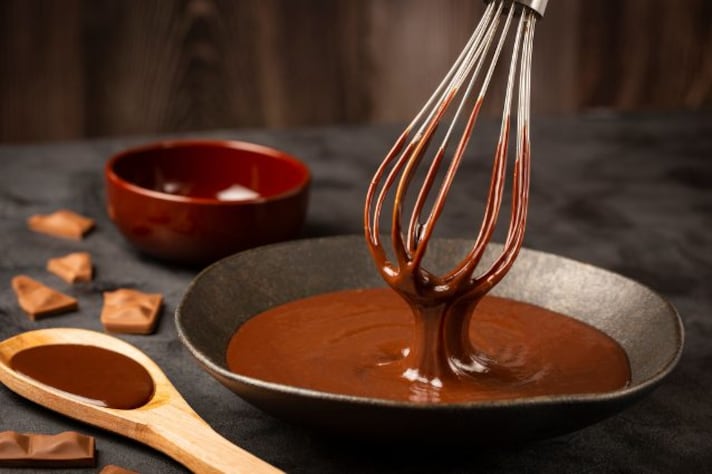
Melting chocolate may seem simple, but achieving that silky, glossy consistency takes more than just throwing chunks into a bowl and hitting the microwave button. The process varies depending on whether you're melting dark, milk, or white chocolate—and getting it just right can feel like an art form. Whether you're preparing a luscious ganache, a velvety dipping sauce, or an elegant drip for cakes, there’s nothing more disappointing than seeing your perfectly melted chocolate suddenly harden into a solid mass. So, how can you keep it smooth and fluid for as long as you need?
Why Does Melted Chocolate Harden?
To understand why melted chocolate hardens, we need to look at what’s happening on a molecular level. Chocolate contains cocoa butter, a fat that solidifies at room temperature. When chocolate cools after melting, the fat in the cocoa butter re-solidifies, causing the chocolate to harden again. Tempering, the process of carefully heating and cooling chocolate, can control this re-solidification, but if your goal is to keep it melted, this natural characteristic becomes a challenge.
The tricky part? Chocolate is sensitive to temperature and moisture. As it cools, even a slight drop in heat can make the fats re-bond, causing it to harden. And if water sneaks into the mix, the sugar and cocoa solids can clump together, making the texture grainy or clumpy.

How to Keep Melted Chocolate from Hardening
So, how do you keep your melted chocolate from reverting back to a solid? The answer lies in maintaining the right temperature. Chocolate needs to be kept warm—around 86°F to 90°F (30°C to 32°C) for dark chocolate, and slightly lower for milk and white varieties. Using a double boiler can help with this. Keep your chocolate over a gentle heat source, stirring occasionally to maintain the heat and prevent it from cooling too quickly.
Another tip? Add a fat, such as vegetable oil or melted butter, to keep the chocolate smooth and runny. Just a teaspoon or two can make all the difference. This works because the additional fat lowers the chocolate’s melting point, helping it stay fluid longer without hardening.
If you’re using melted chocolate as a dipping sauce, consider keeping it in a slow cooker on the "warm" setting. This will ensure your chocolate stays at an even temperature without burning, and you’ll have perfectly runny chocolate ready for strawberries or marshmallows whenever you need it.
How to Avoid Your Melted Chocolate Seizing
One of the most common issues when melting chocolate is “seizing,” where the chocolate turns from silky to grainy in an instant. Seizing happens when moisture, even just a drop, comes into contact with your melted chocolate. The water causes the sugar in the chocolate to clump, and before you know it, your smooth mixture has turned into a gritty paste.

To prevent seizing, always make sure your tools and workspace are completely dry before you begin melting. This includes wiping down the bowl and whisk to ensure there’s no lingering moisture. If your chocolate does seize, don’t panic—adding a bit of warm liquid, such as cream or milk, can bring it back to life. Slowly stir in the liquid, and you’ll find that the chocolate smooths out once again.
How to Keep Your Chocolate Smooth and Runny
Lumps in melted chocolate are another headache, especially when you're aiming for a perfect sauce or drip. Lumpy chocolate often results from uneven melting or overheating. To avoid this, chop your chocolate into even pieces before melting—this ensures that it all melts at the same rate. If some pieces are larger than others, the smaller ones may burn or overcook while the larger ones are still melting.
Another important tip is to melt your chocolate slowly. Whether you're using the microwave or a double boiler, go low and slow. In the microwave, use 20-30 second intervals, stirring between each session. If you’re using a double boiler, keep the heat low and stir gently but consistently to avoid overheating any portion of the chocolate. If you see lumps forming, take the chocolate off the heat and let the residual warmth finish the melting process. Patience is key here—rushing the process is a recipe for lumpy disaster.
;Resize,width=767;)
